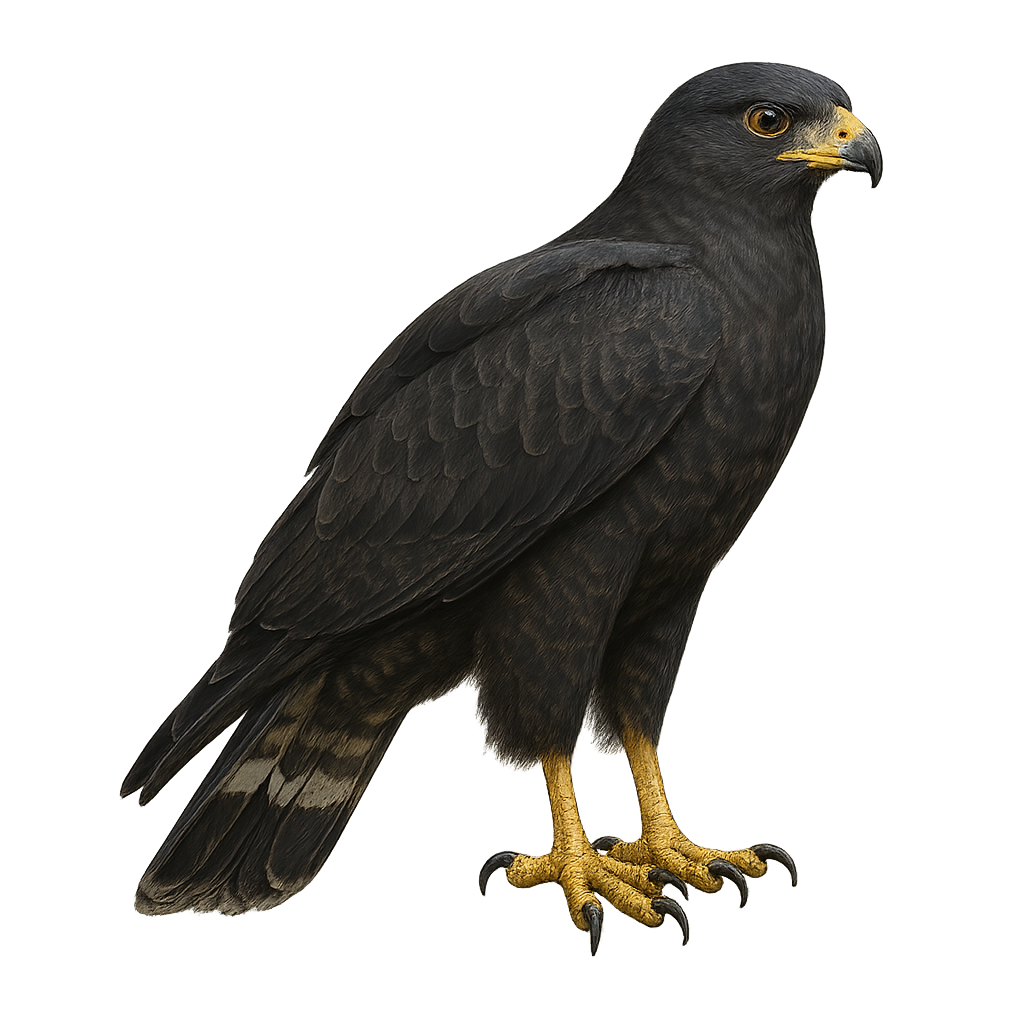Your wildlife photography guide.
Explore the zone-tailed hawk in detail, study its behavior, prepare your shots.
Where to observe and photograph the zone-tailed hawk in the wild
Learn where and when to spot the zone-tailed hawk in the wild, how to identify the species based on distinctive features, and what natural environments it inhabits. The WildlifePhotographer app offers tailored photography tips that reflect the zone-tailed hawk’s behavior, helping you capture better wildlife images. Explore the full species profile for key information including description, habitat, active periods, and approach techniques.
Zone-tailed Hawk
Scientific name: Buteo albonotatus

IUCN Status: Least Concern
Family: ACCIPITRIDAE
Group: Birds
Sensitivity to human approach: Suspicious
Minimum approach distance: 30 m
Courtship display: March to April
Incubation: 28-32 jours
Hatchings: April to June
Habitat:
Forests, arid areas, mountains
Activity period :
Primarily active during the day, with peak activity in the morning and late afternoon.
Identification and description:
The Zone-tailed Hawk, or Buteo albonotatus, is a medium-sized raptor known for its distinctive white tail bordered with black. It measures about 48 to 61 cm in length with a wingspan of 117 to 140 cm. Its predominantly dark plumage allows it to blend seamlessly into its natural habitat. This raptor is often mistaken for the Turkey Vulture in flight due to its similar silhouette. It is primarily found in arid and semi-arid regions from the southwestern United States to northern South America. The Zone-tailed Hawk is an opportunistic predator, feeding on small mammals, birds, and reptiles. It is known for its graceful soaring flight and ability to use thermal currents to travel long distances effortlessly.
Recommended lens:
400mm – adjust based on distance, desired framing (portrait or habitat), and approach conditions.
Photography tips:
To photograph the Zone-tailed Hawk, it is advisable to use a telephoto lens of at least 400mm to capture detailed images from a distance. Since this bird is often in flight, try photographing it during its soaring flights, using a fast shutter speed to freeze the motion. Look for open areas where it might be hunting, such as forest edges or clearings. Be patient and discreet to avoid scaring it away, and take advantage of the golden hours in the morning or evening for soft and flattering light.
The WildlifePhotographer App is coming soon!
Be the first to explore the best nature spots, track rutting seasons, log your observations, and observe more wildlife.
Already 1 430 wildlife lovers subscribed worldwide

